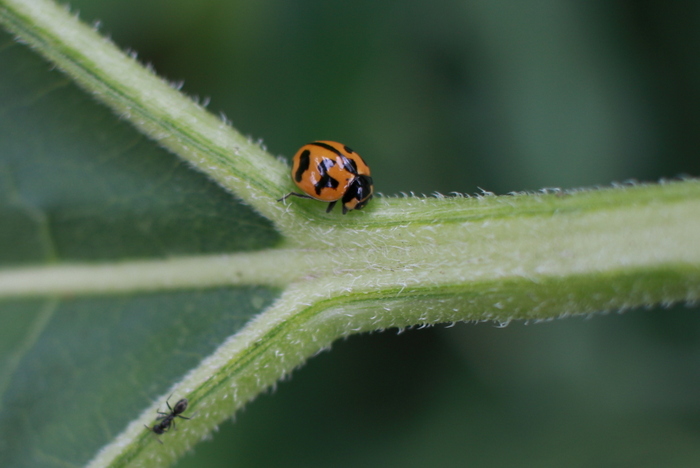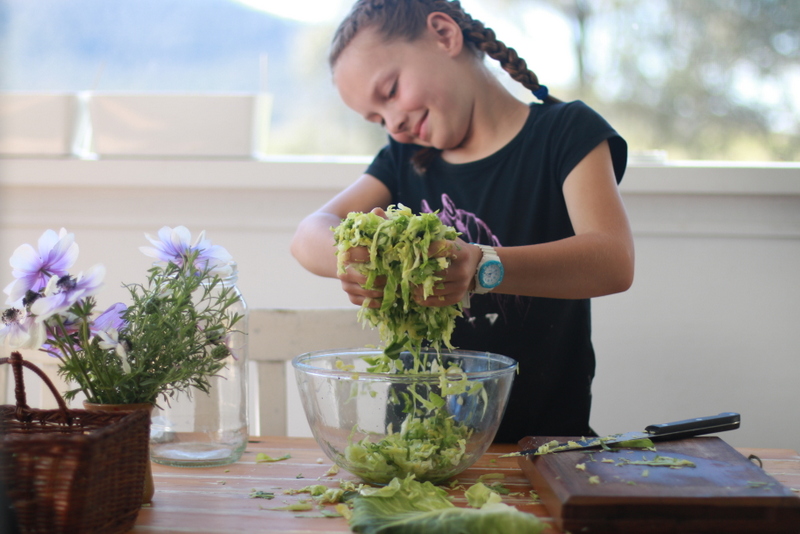There are masses of 28-spotted ladybirds feasting on my potato patch and gobbling my zucchini leaves.
The majority of Australian ladybirds are beneficial. But there’s a handful of ladybird species that are far from helpful. It’s important to be able to distinguish the good guys from the bad – because you don’t want to accidentally squish one of your garden helpers.
The majority of Australia’s 500 species of ladybirds are great garden helpers.
They prey on sap-sucking garden pests including aphids, scale insects and mites.
In my garden at the moment I’ve noticed the common transverse ladybird and….
..the spotted amber ladybird.
Both are particularly abundant in my sweetcorn patch.
These good guys are welcome in my garden any-time.
They are presumably feasting on the aphids and mites that are trying to suck sap from my corn plants.
The spotted amber ladybird is so good at managing aphids that it can be purchased as a biological control measure for crops. Eggs are sold on strips of tape that are attached to plants. The larvae then hatch and hunt down aphids. Having these guys in my garden is like having free on-site natural pest control workers busying themselves protecting my plants from pests.
But there are a few ladybirds that are not welcome in my garden.
The 28-spotted ladybird is one of them.
It’s one of only eight species of plant-eating ladybirds present in Australia.
These leaf-eating ladybirds can wreak havoc in your garden.
They are particularly fond of plants in the Cucurbitaceae and Solanaceae families, including zucchini, pumpkin, cucumbers, melons, potato, and tomato.
Their numbers can explode seemingly overnight. If left to their own devices, they can defoliate whole plants.
Each time I wander through the garden I squish as many as possible – one of my least-liked garden tasks.
If you don’t like the idea of squashing them, you can push them into a container of soapy water or methylated spirits. Neither method is nice, but in the scheme of things, it’s better than the broad-scale application of pesticides that is used to manage these pests in most commercial crops.
Before you start squishing, it’s important that you can distinguish a good guy from the bad.
You don’t want to squish one of your willing workers.
The easiest way to recognise a 28-spotted ladybird is to watch it. Is it eating leaves? The characteristic windowing or skeletonised leaf damage it leaves behind is easy to recognise.
If you are still not sure then you can count the spots. There’s 13 spots on each elytra (wing shield) and two more on its pronotum (bit behind it’s head).
On the topic of ladybird morphology – check out this wonderful interactive ladybird morphology tool. Perfect for children wanting to learn about ladybeetle bits.
The common spotted ladybird, a good bug, is probably the most similar looking, but it has much larger and fewer spots.
The fact that the 28-spotted ladybird has taken off in my garden tells me my plants are stressed.
That doesn’t surprise me, because I’ve been intentionally stingy on the water for my potatoes, thinking they could tolerate it. But apparently not.
I topped up my mulch and watered deeply. Infrequent heavy watering is better than more frequent light watering that might not penetrate the mulch.
We’ve since had a little rain and the number of 28-spotted ladybirds has decreased considerably.
A outbreak of 28-spotted ladybirds may also be caused by nutrient deficiency. Top-dress with compost and give your plants a good drink of weed tea or seaweed extract and they’ll be more resistant to pests.
If your plants are struggling to deter pests, its also a good idea to check that your soil isn’t too acidic or too alkaline. You can pick up a soil test kit from a nursery or hardware store.
Originally published in the Newcastle Herald Monday 2nd November 2015.



